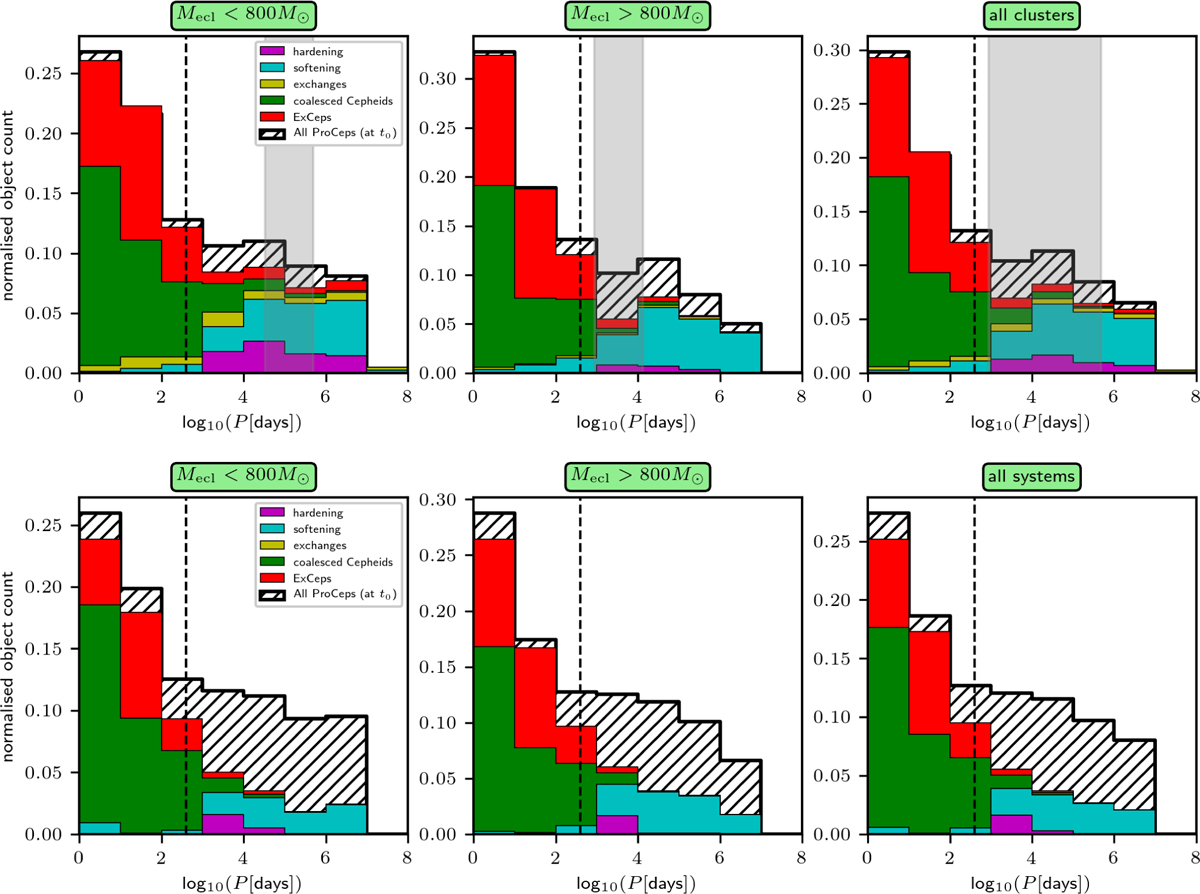Fig. 5

Download original image
Outcome of binary evolution in ProCeps as a function of their initial orbital period. Upper row: the panels from left to right show the future of ProCeps formed in a population of star clusters of the assumed ECMF of Eq. (4) for clusters of mass Mecl < 800 M⊙, clusters with Mecl ≳ 800 M⊙, and all clusters combined. BiCeps which harden, soften or exchange their companions are shown by the magenta, cyan and yellow regions, respectively. Cepheids which have coalesced with their companion are shown by green regions, and ExCeps are shown by red regions. These evolutionary outcomes are shown as stacked histograms. The initial orbital period distribution for all Cepheids is shown by the thick black histogram (the hatched regions represent the rest of BiCeps, which have not underwent any of the aforementioned evolutionary changes). We note that the colour-coded histograms are not additive; for instance an exchange that hardens at the same time is shown in both areas as if it were two separate binaries. The orbital period of a binary can change between t0 and the time when the star becomes a Cepheid (see e.g. Fig. 6). The vertical black dashed lines (at log10(P[days]) = 2.6) show the upper orbital period for physical collision with their companion during the Cepheid phase. The vertical grey bands represent the threshold orbital period Psep between the soft and hard binaries for clusters of the particular mass range. The plots are for a population of star clusters with Rg = 8 kpc and Z = 0.014. Lower row: same as the upper row but for the control models with the same metallicity.
Current usage metrics show cumulative count of Article Views (full-text article views including HTML views, PDF and ePub downloads, according to the available data) and Abstracts Views on Vision4Press platform.
Data correspond to usage on the plateform after 2015. The current usage metrics is available 48-96 hours after online publication and is updated daily on week days.
Initial download of the metrics may take a while.


